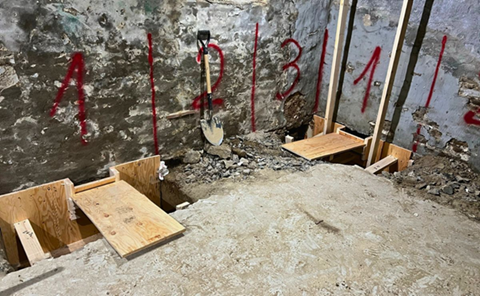If you live in an old house, you may notice cracks in the walls, uneven floors, or doors that don’t close properly, and these are often warning signs of a weak foundation.
When the ground under your home shifts or settles, it can make the foundation unstable, and that’s where underpinning comes in handy, as it strengthens and supports the existing foundation to prevent serious damage.
Before you go out and look for underpinning in Toronto, let us tell you about the types so you can decide which one is for you.
What Are The Different Underpinning Methods
Underpinning helps strengthen an existing foundation by extending it to more stable soil layers and redistributing the building’s weight to deeper, stronger ground. The different method types include the following.
- Mass Concrete Underpinning
This is the most traditional and budget-friendly technique that involves digging sections beneath the foundation and filling them with concrete. A small gap is left between the old and new foundation, which is later filled with mortar once the concrete has cured, while joggle joints and reinforcement bars are used to add extra strength.
- Beam and Base Underpinning
When it comes to beam and base underpinning, concrete beams are added either below or above the current foundation and connected to new concrete bases so the building’s weight is spread evenly and ensures stronger support. This method is perfect for buildings that have serious issues and require long-term strength and safety.
- Mini-Piled Underpinning
This method is used when access is limited or when deep foundations are needed to strengthen the structure of your home. It involves inserting concrete or steel piles into soil and then filling them with grout so they can support the building’s weight well. Though it’s more expensive, mini-piling is ideal for sites with tight spaces, sensitive surroundings, or strict noise regulations.
Foundation issues can be scary, but they don’t have to be overwhelming if you detect the signs early and take the necessary steps to fix them. By understanding the different underpinning methods, you can choose the right one for your home and keep your building’s foundation strengthened.




